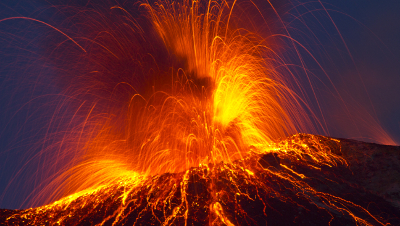Why is Volcano Surveillance Necessary?
Volcanoes pose a danger to life in many parts of the world. Eruptions occur relatively frequently, presenting risks to both health and infrastructure. The analysis of gas, liquid, and soil samples offers vital information regarding the levels of rare gas isotopes such as argon, neon and helium.
Volcano monitoring requires the use of a number of methods to ascertain the activity inside a volcano. For full understanding of a volcano’s behavior, monitoring must include several types of observation on a continuous or near-real-time basis.
Volcanic Sediment Analysis
Hiden mass spectrometer systems are used by vulcanologists across the globe for both gas and liquid analysis. Additionally, these systems can be used to analyze soil or sediment gas with the key volcanic gases and isotopes being able to be measure to parts per billion levels and even parts per trillion levels in some cases.

Volcanoes produce a lot of sediment which is delivered quickly to deposition sites and flow transformations can result in lateral changes. During eruptions, large quantities of pyroclastic and hydroclastic sediment are released quicker than any standard production process of epiclastic particles.
Volcanic sediment analysis plays a vital role in understanding the disruptions of sedimentary environments that are caused by eruptions.
Volcanic Sediment Analysis Solutions from Hiden Analytical
Hiden Analytical’s range of instruments now includes a the pQA portable analyzer, which has been created for use in field studies. Hiden systems have been created for both direct, real-time analysis of gases, water and sediments in the field as well as sample analysis in the laboratory.
For long-term surveillance of volcanic systems, direct gas sampling is the ideal solution as it produces an in-depth chemical analysis of specific fumaroles and vents. Volcanic gas samples are usually collected by inserting a chemically inert and durable tube into a hot fumarole.
Once the tube has been heated until the condensation in the tube has reached an equilibrium with the escaping gases, either a specially-designed evacuated-sample bottle or a flow-through sample bottle is attached to the collection tubing. Usually, the full suite of major volcanic gases in the sample can be determined, including water, CO2, SO2, H2S, HCl, HF, CO, and H2. If additional gases such as nitrogen (N2), oxygen (O2), helium (He), and neon (Ne) are present they can be detected along with other trace gases.
Fumarole temperature is significant in understanding the quality and utility of direct samples. The higher the temperature, the better the sample will reflect the conditions of the magma supplying the gas. Monitoring rapidly changing conditions direct gas sampling of fumaroles is not optimal as laboratory analyses often take significant amounts of time to complete.
Despite this, detailed gas composition analyses can offer critical information for evaluating volcanic hazards and creating models that offer insight into the condition of the magma at the depth from which the gases originated.
By comparing volcanic sediment analysis data with results from previous volcanic events volcanologists can forecast changes in volcanic activity, determining whether volcanoes may erupt in the future.
The Hiden pQA gas analysis system is reated for field studies.
If you would like to find out more about Hiden Analytical’s volcanic sediment analysis solutions, contact us today.

